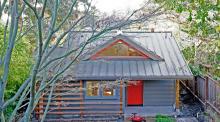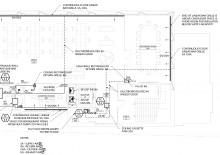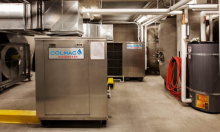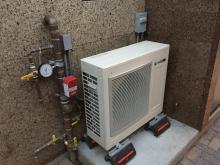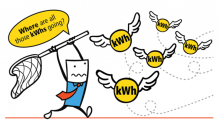Submitted by Nate Russell on Wed, 02/03/2021 - 06:38
Submitted by Kara Rousselle on Fri, 11/06/2020 - 06:37
Image: Beyond Efficiency schematic mechanical design for new office building with direct outside air system (DOAS)
Submitted by Peter Grant on Mon, 07/20/2020 - 03:44
Central heat pump water heating (HPWH) systems are the cutting edge in all-electric multifamily buildings in California. These systems promise to significantly lower carbon emissions of buildings while reducing energy costs and providing the same satisfactory hot water delivery performance as gas systems. Accordingly, the California Energy Commission (CEC) has partnered with consultant Ecotope to create Title 24 prescriptive and performance compliance options enabling further market penetration. The groundwork is set for this to become a mainstream technology!
Submitted by Jose Rivero on Thu, 03/21/2019 - 00:43
Image: Outdoor component of Sanden SANCO2 from Beyond Efficiency's Berkeley Way Passive House project
Submitted by Mrigesh Roy on Fri, 09/21/2018 - 03:09
This is the second in a series about home energy monitoring.
In Part I of this blog series, I discussed what home energy monitors are and how they can help save energy and money. Here I unveil Part II, where I’ll go over key features of whole-house energy monitors and discuss a few considerations when picking a monitor for your home.
Submitted by Jennifer Love on Sat, 04/21/2018 - 20:44
I recently attended the American Council for an Energy-Efficient Economy (ACEEE) 2018 Hot Water Forum. This annual event brings together the most forward thinking policy makers, manufacturers, researchers and practitioners whose passion is how to make and deliver hot water efficiently and safely. As with the last water conference I attended, the development of a new pipe sizing methodology was a hot topic.
Submitted by Mrigesh Roy on Thu, 02/01/2018 - 05:32
This is the first in a series about home energy monitoring.
Let’s say you want to cut your energy use to save money, reduce your carbon footprint or even be zero energy. What consumes the most energy in your building? What's consuming more electricity than usual? How big will your utility bill be?
Submitted by Dan Johnson on Thu, 10/05/2017 - 10:21
In late September I gave a presentation at the 12th Annual North American Passive House Conference, organized by PHIUS, describing how heat pump water heaters can be used for combined space heating and water heating. When strolling the vendors' floor between presentations, I was pleasantly surprised to see an increase in the quality of Passive building products.
Submitted by katy hollbacher on Fri, 09/22/2017 - 13:51
I was lucky to be in Jackson Hole, Wyoming—virtually smack-dab on the "blue line" in the narrow path of totality—for the first coast-to-coast total solar eclipse in 99 years on August 21. There was so much hype leading up to this event, and it was completely justified! For an unforgettable moment in the midst of our vast universe, in a special spot dynamically shifting east along with the movement of our planetary objects, our sun and moon literally aligned and our little spot of Earth was transformed: the sky darkened, the horizon turned orange, stars appeared, and the air felt freezing.
Submitted by Jose Rivero on Mon, 06/05/2017 - 05:38
Thanks to a recent presentation by Pierre Delforge from the Natural Resources Defense Council (select sides below), the case for deploying heat pump water heaters to replace both electric and natural gas models is becoming more clear for many.
Pierre began by showing that as our electricity gets cleaner, the natural gas we burn is making up a larger portion of greenhouse gas emissions. Two thirds of Bay area household CO2 emissions now come from burning natural gas.
Pages


